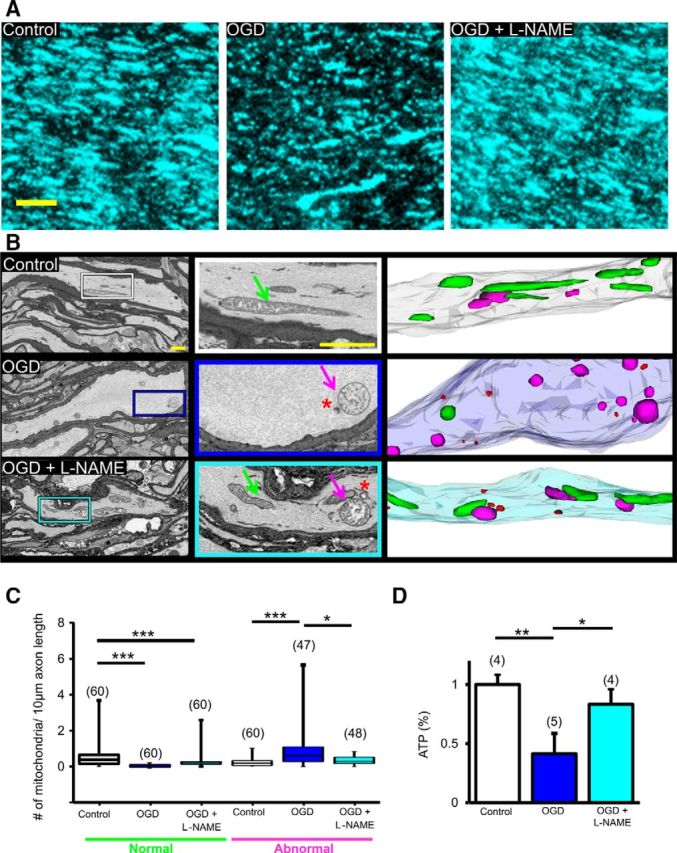Figure 4.

Pan-NOS inhibition protects axonal mitochondrial structure and function in aging WM. A, Two-photon microscopy images show that OGD drastically reduced CFP(+) fluorescence in MONs from Thy-1 mito-CFP(+) mice. l-NAME application conserved CFP(+) mitochondria. Note that aging axons display longer and thicker mitochondria, which became smaller in size and fewer in number when exposed to OGD. Scale bar, 5 μm. B, l-NAME preserved mitochondrial morphology. Representative electron micrographs obtained from 3-D EM stacks of MONs (left and middle) under baseline, OGD, and OGD with l-NAME pretreatment. OGD was associated with myelin thinning, marked swelling of axons, abnormal-appearing swollen mitochondria (magenta arrow), and few degradation products (red asterisks). l-NAME preserved mitochondrial structure (normal mitochondria, green arrow) and axons profiles. Scale bar, 1 μm. Middle, Magnified views of representative axons from left and right panels show 3-D EM reconstructions of these axons displaying normal (green) and abnormal (magenta) mitochondria and degradation products (red) in axons following OGD. C, OGD increased the number of abnormal mitochondria, whereas l-NAME attenuated mitochondrial numbers. n = number of MONs. *p < 0.05, ***p < 0.001; Kruskal–Wallis test followed by Dunn's multiple-comparison test. D, l-NAME preserved MON ATP levels following OGD. *p < 0.05, **p < 0.01, one-way ANOVA with Bonferonni's post hoc test.
